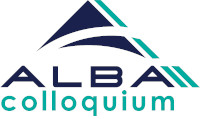- https://www.cells.es/es/actualidad/eventos/eventos-publicos-de-alba/alba-ii-colloquium-3-direct-imaging-of-orbitals-in-quantum-materials-using-inelastic-scattering
- ALBA II Colloquium #3 - "Direct Imaging of Orbitals in Quantum Materials using Inelastic Scattering"
- 2021-02-15T11:00:00+01:00
- 2021-02-15T12:00:00+01:00
- Liu Hao Tjeng (Max Planck Institute for Chemical Physics of Solids)
- Qué
- events
- Cuándo
-
Feb 15, 2021
de 11:00 a 12:00 (Europe/Madrid / UTC100) - Dónde
- ALBA (virtual event by Zoom)
- Nombre
- ihernandez@cells.es
- Enlace del evento
- Página web externa
- Agregar evento al calendario
-
 iCal
iCal
The search for new quantum materials with novel properties is often focused on materials containing transition-metal, rare-earth and/or actinide elements. The presence of the atomic-like d or f orbitals provides a fruitful playground to generate novel phenomena. The intricate interplay of band formation with the local electron correlation and atomic multiplet effects leads to phases that are nearly iso-energetic, making materials’ properties highly tunable by doping, temperature, pressure or magnetic field. Understanding the behavior of the d and f electrons is essential for designing and controlling novel quantum materials. Therefore, identifying the d or f orbitals that actively participate in the formation of the ground state is crucial. So far, these orbitals have mostly been deduced from optical, X-ray and neutron spectroscopies in which spectra must be analyzed using theory or modelling. This, however, is also a challenge in and of itself, since ab-initio calculations hit their limits due to the many-body nature of the problem.
Here we developed a new experimental method that circumvents the need for involved analysis and instead provides the information as measured. With this technique, we can make a direct image of the active orbital and determine what the atomic-like object looks like in a real solid. The method, s-core-level non-resonant inelastic X-ray scattering (s-NIXS), relies on high momentum transfer in the inelastic scattering process, which is necessary for dipole-forbidden terms to gain spectral weight. To demonstrate the strength of the technique, we imaged the text-book example, ground-state x2-y2/3x2-r2 hole orbital of the Ni2+ ion in NiO single crystal (see Figure). We will present the basic principles of s-NIXS and its experimental implementation. We will show how we can apply this technique to unveil the active orbitals in complex oxides as well as in highly metallic systems. We will explain how s-NIXS can determine the orbital character of not only the ground state but also of the excited states.

About ALBA II Colloquium
The series ALBA II Colloquium, addressed to the scientific user's community of synchrotron radiation, is aimed at inspiring and promoting fruitful ideas and information exchange about the future development of ALBA II facility.




